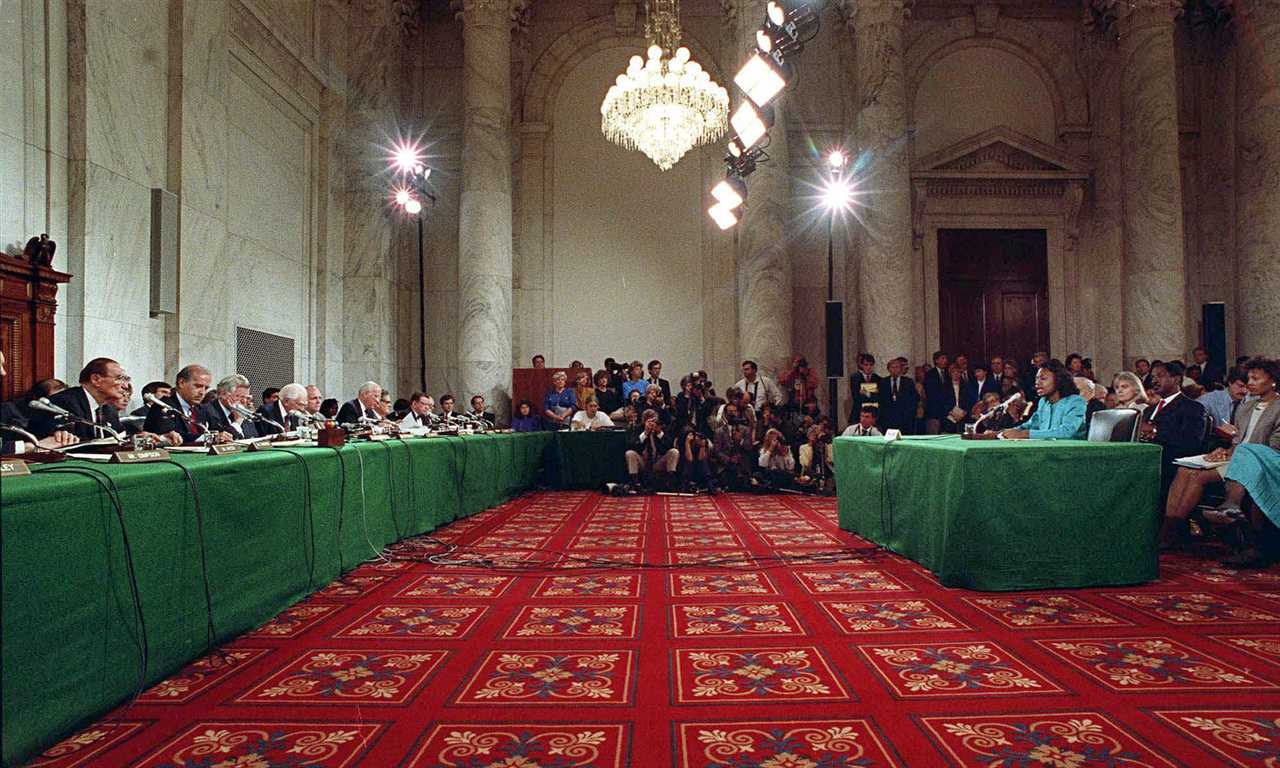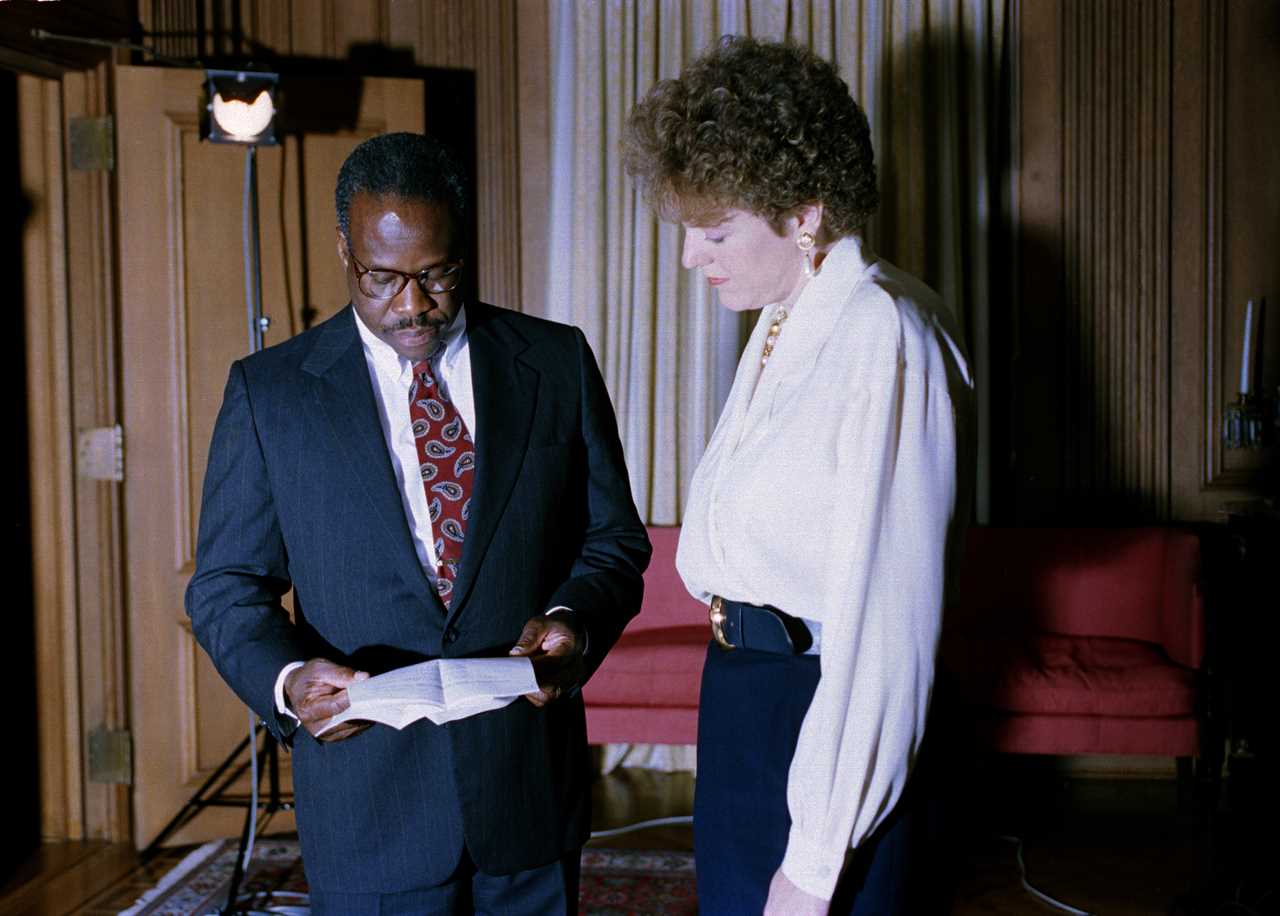
In October 1991, I was part of the legal team that supported Anita Hill in her testimony before the Senate Judiciary Committee in which she bravely alleged sexual harassment at the hands of now-Supreme Court Justice Clarence Thomas. His confirmation by that committee, chaired by then-Democratic Sen. Joe Biden, was one of the most consequential moments in setting the future trajectory of the ideals that matter most to me — civil rights, gender equity and our multiracial democracy.
As I sat on the steps of the Capitol with a colleague after the narrow confirmation of a man who opposed much of the legacy of Thurgood Marshall, the great American civil rights lawyer who Thomas was being tapped to replace, we both came to the same conclusion: This appointment was going to shape the rest of our lives.
Unfortunately, history has confirmed our fears. As national commitments to racial justice and basic civil rights continue to unravel, under what is functionally regarded as the Thomas Court, the very health of our multiracial democracy is a long-term casualty of that day.
This week’s Supreme Court ruling overturning affirmative action is further confirmation of those fears.
For Black Americans and their allies, Thomas’ role in weakening the painstakingly-built legal apparatus to advance civil rights is particularly tragic. Thomas cynically deployed a faux-racial complaint to place himself in one of the most privileged positions to undermine policies that address our most pressing racial problems.
At the time of his confirmation, Thomas exploited the language of race and racism to rally Black Americans and even some Democrats to join his GOP benefactors in support of his nomination. His assertion that Hill’s accusations of sexual harassment amounted to a “high-tech lynching” should have been a risk for a man who downplayed the contemporary significance of anti-Black racism and denigrated civil rights leaders as whiners. To suddenly wrap himself in the bloody history of lynching, or to assume that the public would accept that the testimony of Black woman could be remotely tied to the vicious murder of Black men, should not have been a sure win.
But Thomas bet that deploying tropes of racial violence would obscure his well-established hostility to antiracism and the anti-civil rights agenda of the party that nominated him, and it yielded a big payout, for him and the conservative movement.
More than 30 years after Thomas turned his tokenism into a pseudo-rallying cry for equity, he is fulfilling his career-long mission to erase affirmative action, the very policy that facilitated his rise to the Supreme Court.
And there is perhaps no one figure who more singularly symbolizes the cyclical nature of racial progress and retrenchment than Thomas, who is at once a beneficiary of every hard-fought civil rights advancement in this country and an arsonist of the very policies that set the conditions of his possibility.
Voting rights, bodily autonomy via abortion rights, and now affirmative action — these policies are all hallmarks of a functioning multiracial democracy and also the ones that Thomas himself has been eager to burn, leaving a trail of ash in his wake instead of clear pathways for others to walk where he has.
His confirmation to the Court in 1991 was a turning point for our country, not only because of the conservative views he would infuse into the architecture of federal law but also because of how he challenged the general public’s understanding of race and racism: Thomas showcased how a Black man who consistently opposes measures that would benefit Black Americans can in fact be a perpetrator of systemic racism despite the color of his skin.

It is in this way that Thomas’ long standing opposition to affirmative action has played a significant role in setting the tone for today’s culture wars. Thomas gave a high-profile platform to the central idea of modern conservative politics — that any policy or action that levels the playing field for those who have been traditionally marginalized, like Black Americans, is punitive against White people.
The idea that righting historical wrongs for Black Americans “takes away” from white Americans is as old as Reconstruction. But it found new oxygen in our contemporary politics with the fight over affirmative action and the framing that universities “took away” spots from white students by acknowledging historical barriers to admission for diverse students. That democratic progress is a blow to white Americans is the corrosive lie that animates nearly every fight we see, from the attack on the Capitol in 2021 to the nascent 2024 presidential election.
That Thomas, a Black man, was the messenger for anti-anti-racist thought was a boon to conservatives. They capitalized on his race as validating of their worldview — while exploiting the lack of race-conscious education in America more broadly to make the case that the politics of one Black person can disprove that systemic racism exists. This playbook is not unique to Thomas — we are seeing it when 2024 GOP presidential candidate Tim Scott disputes the existence of systemic racism to the delight of his followers — but it is ultimately damaging to the racial justice movement and our national politics writ large.
Philosophically, the terms of the battle over affirmative action were the gateway to the right’s current and all-consuming fixation on suppressing the freedom of ideas, books and education in the name of vanquishing an opponent in “wokeness” they cannot even themselves define. Learning about 1619","link":{"target":"NEW","attributes":[],"url":"https://www.nytimes.com/interactive/2019/08/14/magazine/1619-america-slavery.html","_id":"00000189-0cb3-dd15-afab-0eb787e70004","_type":"33ac701a-72c1-316a-a3a5-13918cf384df"},"_id":"00000189-0cb3-dd15-afab-0eb787e70005","_type":"02ec1f82-5e56-3b8c-af6e-6fc7c8772266"}">the history of slavery in 1619 is not a driver of white guilt but a tool for understanding our society. Learning about intersectionality is not discriminating against whites; it is about understanding why holding more than one identity at once could expose a person to layered systemic barriers.
At the same time, the stigma created around affirmative action, with its political focus on individual beneficiaries as opposed to systemic racism, sexism and bigotry resulted in the same sort of asymmetric political warfare we are also witnessing today, with the establishment shy about touting the policy’s virtues and purpose or its connection to the greater project of civil rights.
But efforts to build back barriers to diverse students gaining admission to colleges, to censor Black authors and ideas, to ban Diversity Equity and Inclusion programs (as was just signed into law by Gov. Greg Abbott in Texas) are not isolated. They are not thought experiments or philosophical debates or fodder for social media memes. They are explicit, coordinated attacks and well-funded attacks on democracy and they will have real, sustained impacts on millions of Americans across race, gender and class.
When fewer minority candidates get accepted into institutions of higher education, this is not just an issue for the elites. It functionally will mean fewer diverse doctors, lawyers, educators and lawmakers, which will significantly impact the quality of life for Black Americans. Research has shown in areas with more Black doctors, Black people live longer—even in counties with just one Black doctor as opposed to none. Black lawyers can create more equitable outcomes for Black clients. Black students who have one Black teacher by third grade are 13 percent more likely to enroll in college and 32 percent more likely if they have two Black teachers in that same time period.
The results of the decision to strike down race-conscious admission is to perpetuate the myth that our society is color blind and to literally make it more likely that Black Americans could find themselves unemployed, in prison or dead.

Democracy’s opponents, who always have thrived on stoking racism for political gain, have always known this. It’s why the Civil Rights Movement centered on public education as laboratories of democracy and why today’s politicians like Gov. Ron DeSantis ban books, teaching of critical theories and even saying the word “gay” in classrooms. Their goal is to dismantle public education as we know it to enhance their anti-democratic, anti-equity agenda.
We cannot shrug off these affirmative action decisions as inevitable or somehow not as damaging as any number of the many destructive reversals that have come out of the Roberts Court. Dobbs, for example, was a setback that launched abortion-rights forces into action across the nation. Affirmative action decisions don’t require anything less.
Which brings me back again to Clarence Thomas and his role in this great conservative project.
Thomas’ ploy to package a deeply conservative project in the trappings of racial liberation worked, in part, because of the confusion, ambivalence and misinformation that prevailed on the left about race and its many intersections. We’ve had more than 30 years to do better — to understand the myriad ways that our racial past is embedded in our institutions, to become familiar with the tools necessary to identify and remove their toxic imprint, and to use this knowledge to build the multiracial democracy we hope to fully become. The road we are now traveling has become more perilous with the decisions passed this term. We cannot wave the white flag of surrender.
The fight continues, but it must be waged differently—with more courage to confront our legacies head on, to defend the ideas and the difficult conversations that the right would rather we not, and to understand that colorblind rhetoric will do nothing to solve color-bound problems.
How profoundly these decisions on affirmative action shape the rest of the lives of all Black Americans and people of color depends on how hard we fight back to achieve the justice and democracy we deserve.
That fight starts anew now.
----------------------------------------
By: Kimberlé Crenshaw
Title: Opinion | I Worked With Anita Hill to Fight Clarence Thomas’ Confirmation. Our Worst Fears Came True.
Sourced From: www.politico.com/news/magazine/2023/06/30/anita-hill-clarence-thomas-supreme-court-affirmative-action-00104387
Published Date: Fri, 30 Jun 2023 08:21:37 EST






